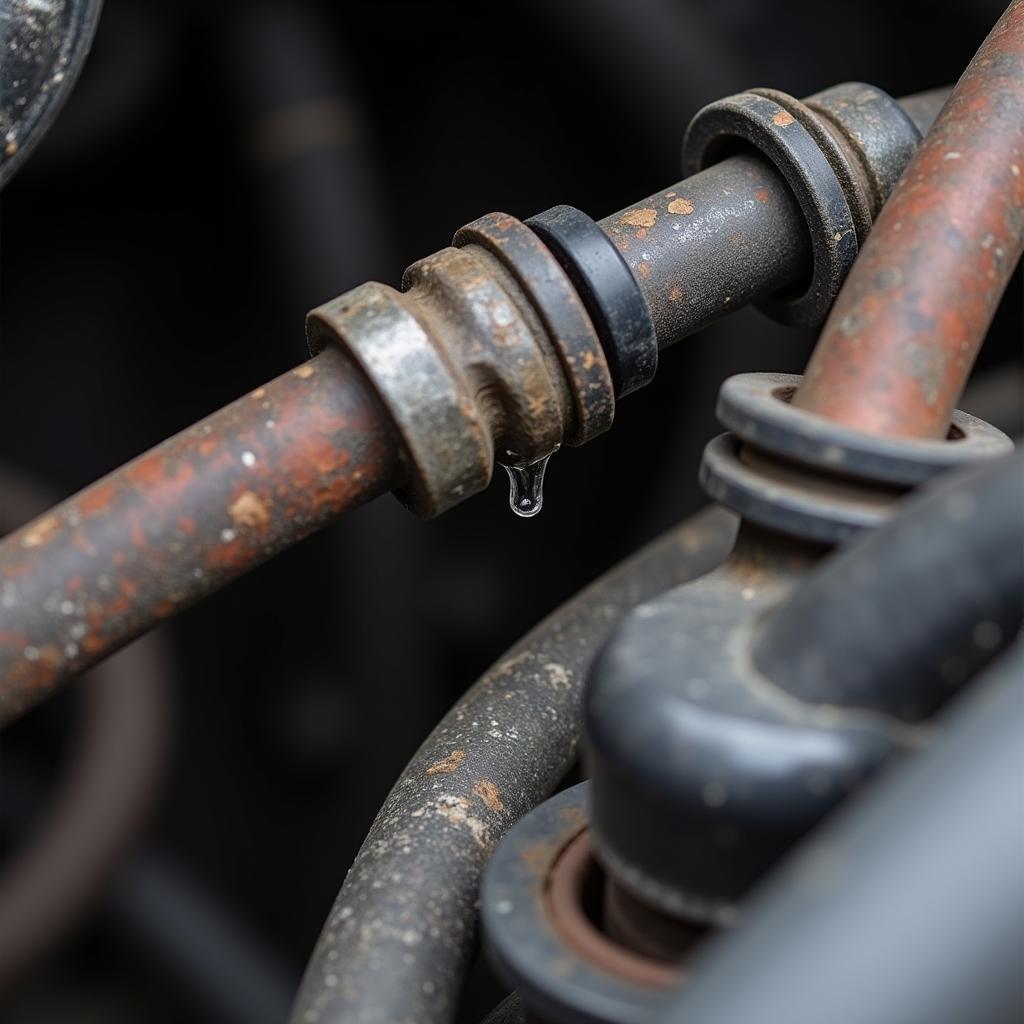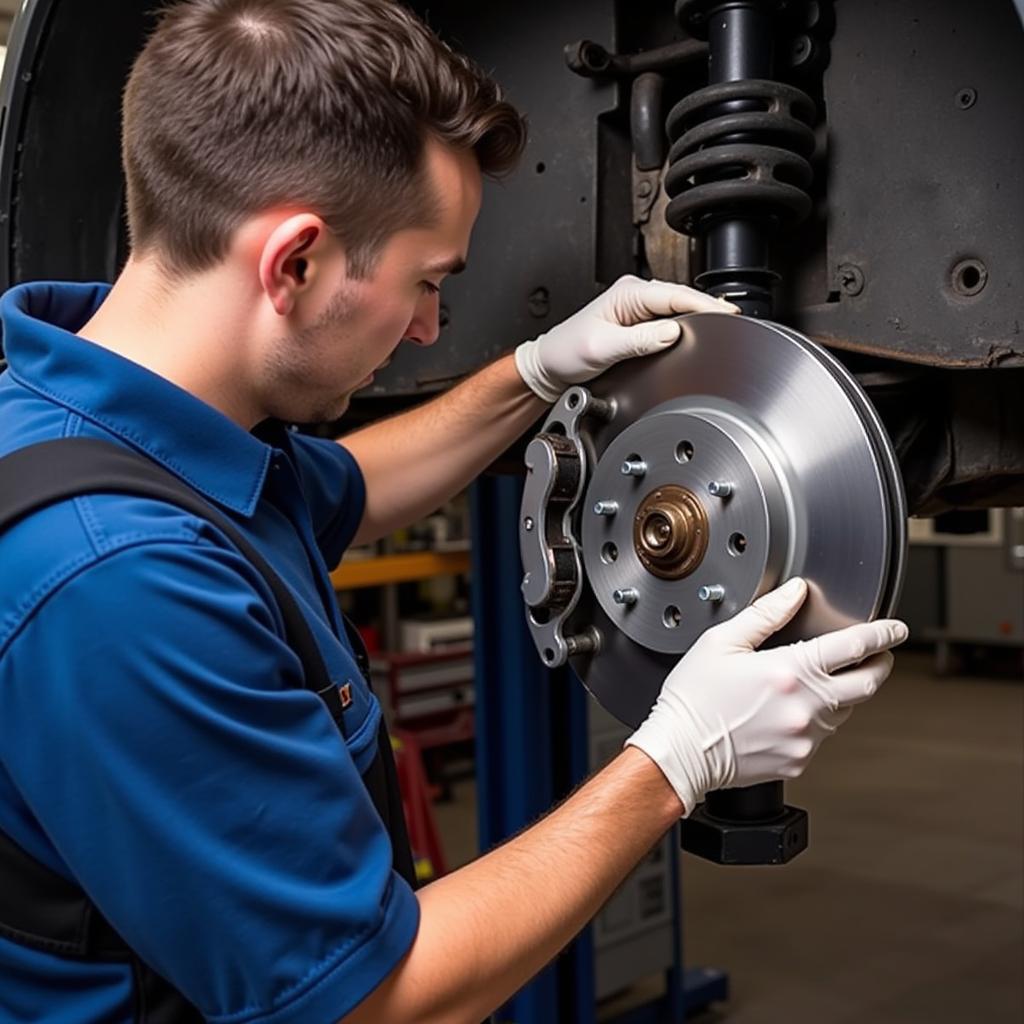The brake warning light on your 1970 VW is a crucial safety feature, designed to alert you to potential issues within your braking system. When illuminated, it signifies that a component within the system may be malfunctioning or nearing the end of its service life. Ignoring this warning light could lead to reduced braking performance and potentially dangerous driving situations.
Common Causes of a 1970 VW Brake Warning Light
While a simple switch malfunction can trigger the brake warning light, several other culprits could be at play in your classic VW. Here are some of the most common reasons your 1970 VW brake warning light might be on:
- Low Brake Fluid: The most common culprit is low brake fluid, often caused by worn brake pads or a leak in the hydraulic system.
- Worn Brake Pads: Over time, brake pads naturally wear down. As they thin, the brake caliper pistons need to extend further to apply the brakes, leading to a lower brake fluid level and triggering the warning light.
- Brake Fluid Leak: A leak anywhere in the hydraulic system, from the master cylinder to the brake lines and calipers, can result in a loss of pressure and activate the warning light.
- Faulty Brake Light Switch: The brake light switch, responsible for activating your brake lights when you press the pedal, can also trigger the warning light if it malfunctions.
- Emergency Brake Engaged: Though seemingly obvious, sometimes the parking brake can be partially engaged, illuminating the warning light.
Diagnosing the Issue
Accurately diagnosing the root cause of the brake warning light is crucial for effective repair. Here’s a step-by-step guide to help you troubleshoot the issue:
- Check the Parking Brake: Begin with the simplest check. Ensure the parking brake is fully disengaged.
- Inspect Brake Fluid Level: With the engine off, locate the brake fluid reservoir under the hood (usually on the driver’s side). The reservoir will have a “min” and “max” marking. If the fluid level is below the “min” mark, add the appropriate brake fluid type recommended for your 1970 VW model.
- Inspect for Leaks: Carefully examine the area around the brake fluid reservoir, brake lines, and all four wheels for any signs of fluid leaks. Look for wet spots, drips, or damp areas.
 Leaking Brake Line
Leaking Brake Line - Check Brake Pad Wear: If the fluid level is low, but you don’t see any visible leaks, worn brake pads are a likely culprit. Inspect the brake pads by looking through the spaces between the wheel spokes. If the pad material is less than 1/4 inch thick, it’s time for a replacement.
- Test the Brake Light Switch: If the fluid level is sufficient and you don’t see any leaks or excessively worn pads, the brake light switch might be faulty. You can test the switch by having someone press the brake pedal while you observe if the brake lights illuminate. If not, the switch may need replacement.
Seeking Professional Assistance
If you’re uncomfortable performing these checks or haven’t found a definitive solution, seeking professional help is always recommended.
“When it comes to brakes, erring on the side of caution is always the safest bet,” says master mechanic Wolfgang Schmidt, who’s been servicing classic VWs for over four decades. “A seemingly minor issue can quickly escalate if ignored, so a professional inspection can provide peace of mind.”
Addressing the Root Cause
Once you’ve identified the source of the problem, take the appropriate steps to address it:
- Low Brake Fluid (No Leaks): Top up the brake fluid to the “max” line using the recommended brake fluid type for your VW model. If the level drops quickly again, suspect worn brake pads or a hidden leak.
- Worn Brake Pads: Replace the brake pads on all four wheels as a set. Uneven braking can occur if you replace pads on only one axle.
- Brake Fluid Leaks: Address leaks immediately. This may involve tightening a loose connection, replacing a damaged brake hose, or rebuilding a leaking caliper.
- Faulty Brake Light Switch: Replacing this switch is a relatively straightforward procedure for most DIYers.
Preventive Maintenance
To minimize the chances of encountering brake warning light issues, regular maintenance is key:
-
Regular Fluid Checks: Inspect your brake fluid level at least once a month and top it off as needed.
-
Timely Brake Pad Replacements: Don’t wait until your brake pads wear dangerously thin. Consult your owner’s manual for recommended replacement intervals.
-
Visual Inspections: Regularly inspect your brake lines and calipers for any signs of wear, cracking, or leaks.
 Inspecting Brake Pads
Inspecting Brake Pads
Conclusion
A glowing brake warning light on your 1970 VW should never be ignored. By understanding the potential causes, following the troubleshooting steps, and prioritizing preventative maintenance, you can ensure the continued safety and reliability of your classic vehicle’s braking system. Remember, when it comes to brakes, addressing issues promptly is always the best approach.
